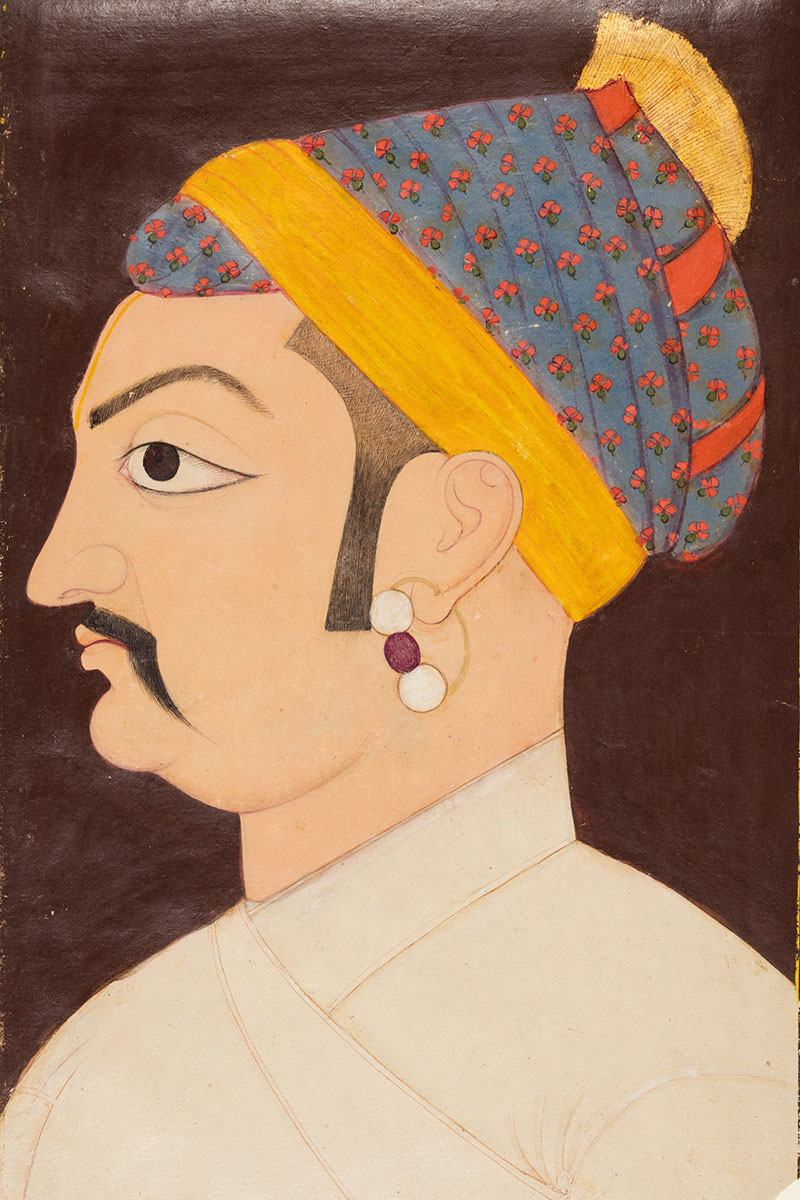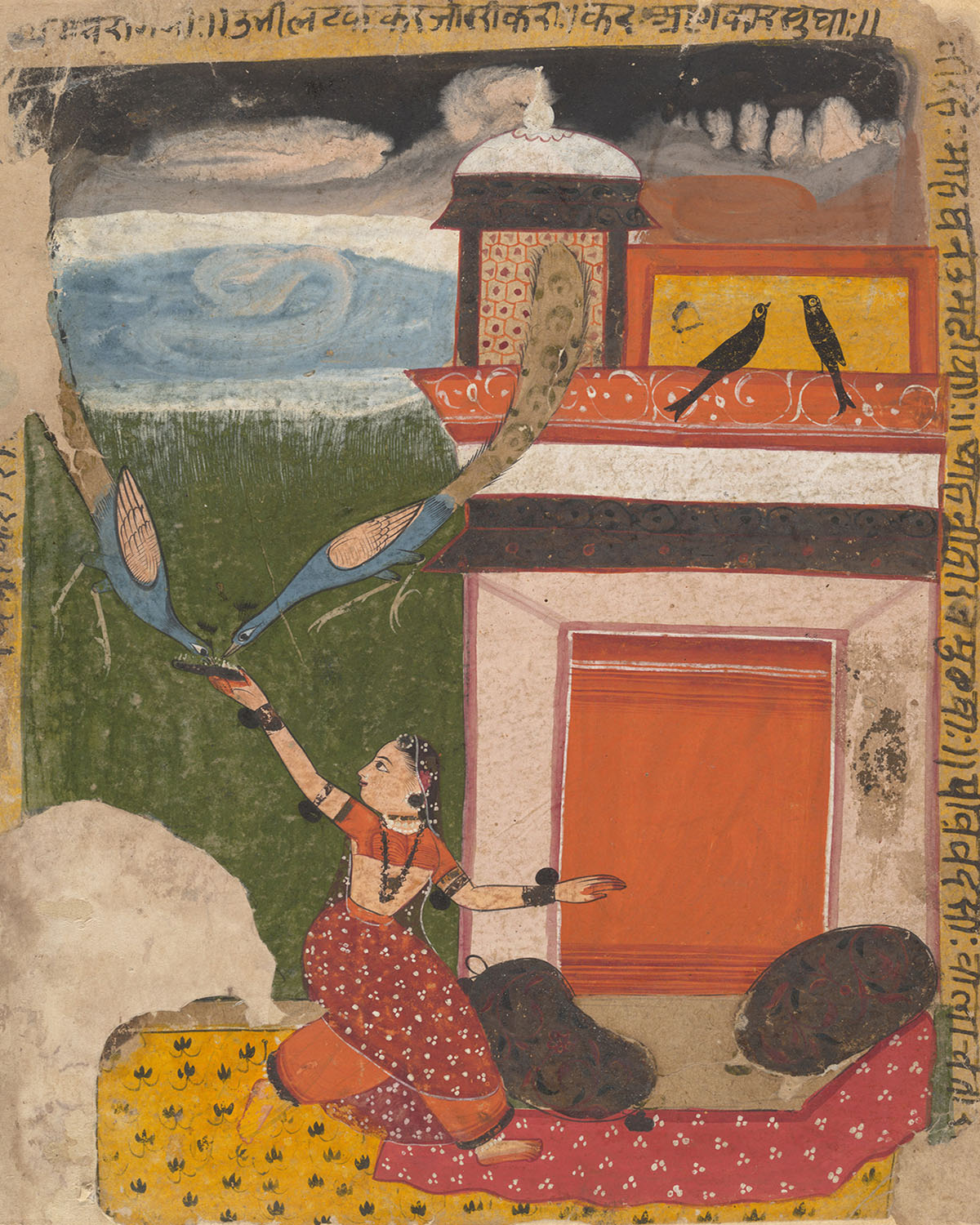ARTICLE
Marwar School of Painting
The Jodhpur state also contained several subsidiary political centres, called thikanas, such as Pali, Nagaur, Ghanerao, Sirohi and Sawar. Here, it was the traditional Rajput painting style that continued to prevail, as evidenced by the Ragamala series of 1623 and a Meghaduta manuscript dated to 1699. This was characterised by a relatively flat treatment of images, bolder hues and the use of colour to demarcate multiple scenes within a single image. This traditional style underwent a revival as the Mughal influence waned in the eighteenth century after the decline of court-patronised art during Aurangzeb’s reign and, later, the decline of the Mughal Empire in general.
By the late-eighteenth century, Marwar painting was marked by an extravagance in the depiction of costumes, human figures, and the use of colour. In the nineteenth century, these paintings became even more decorative in style. While the themes depicted focussed on courtly life, the paintings themselves were characterised by oddly proportioned human figures, garish palettes, and poor draughtsmanship. The arrival of European art towards the end of the nineteenth century cemented the decline of the Marwar school.
Bibliography
Our website is currently undergoing maintenance and re-design, due to which we have had to take down some of our bibliographies. While these will be re-published shortly, you can request references for specific articles by writing to hellomapacademy@map-india.org.









